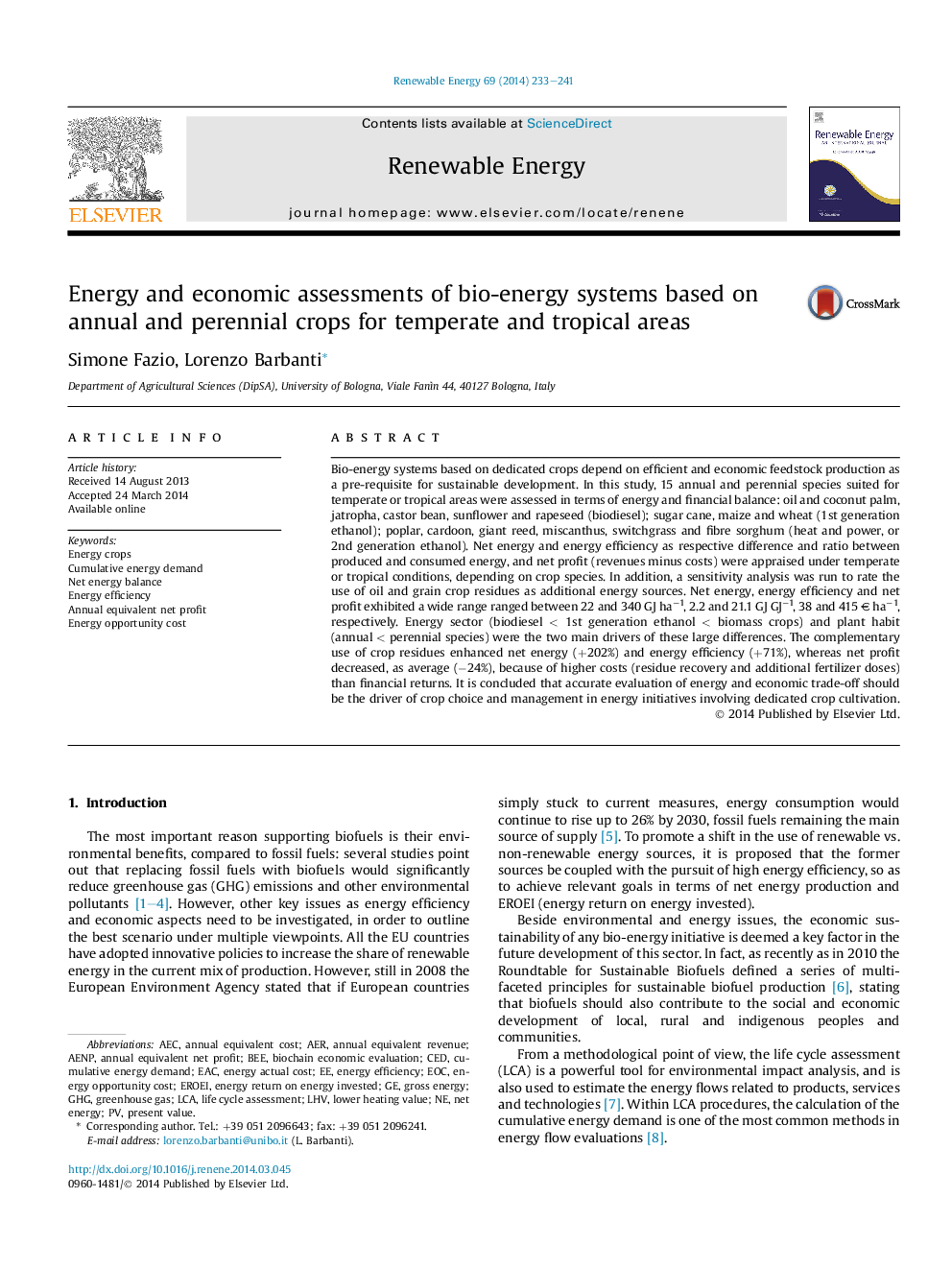| Article ID | Journal | Published Year | Pages | File Type |
|---|---|---|---|---|
| 6768248 | Renewable Energy | 2014 | 9 Pages |
Abstract
Bio-energy systems based on dedicated crops depend on efficient and economic feedstock production as a pre-requisite for sustainable development. In this study, 15 annual and perennial species suited for temperate or tropical areas were assessed in terms of energy and financial balance: oil and coconut palm, jatropha, castor bean, sunflower and rapeseed (biodiesel); sugar cane, maize and wheat (1st generation ethanol); poplar, cardoon, giant reed, miscanthus, switchgrass and fibre sorghum (heat and power, or 2nd generation ethanol). Net energy and energy efficiency as respective difference and ratio between produced and consumed energy, and net profit (revenues minus costs) were appraised under temperate or tropical conditions, depending on crop species. In addition, a sensitivity analysis was run to rate the use of oil and grain crop residues as additional energy sources. Net energy, energy efficiency and net profit exhibited a wide range ranged between 22 and 340 GJ haâ1, 2.2 and 21.1 GJ GJâ1, 38 and 415 â¬Â haâ1, respectively. Energy sector (biodiesel < 1st generation ethanol < biomass crops) and plant habit (annual < perennial species) were the two main drivers of these large differences. The complementary use of crop residues enhanced net energy (+202%) and energy efficiency (+71%), whereas net profit decreased, as average (â24%), because of higher costs (residue recovery and additional fertilizer doses) than financial returns. It is concluded that accurate evaluation of energy and economic trade-off should be the driver of crop choice and management in energy initiatives involving dedicated crop cultivation.
Keywords
Related Topics
Physical Sciences and Engineering
Energy
Renewable Energy, Sustainability and the Environment
Authors
Simone Fazio, Lorenzo Barbanti,
